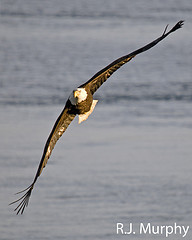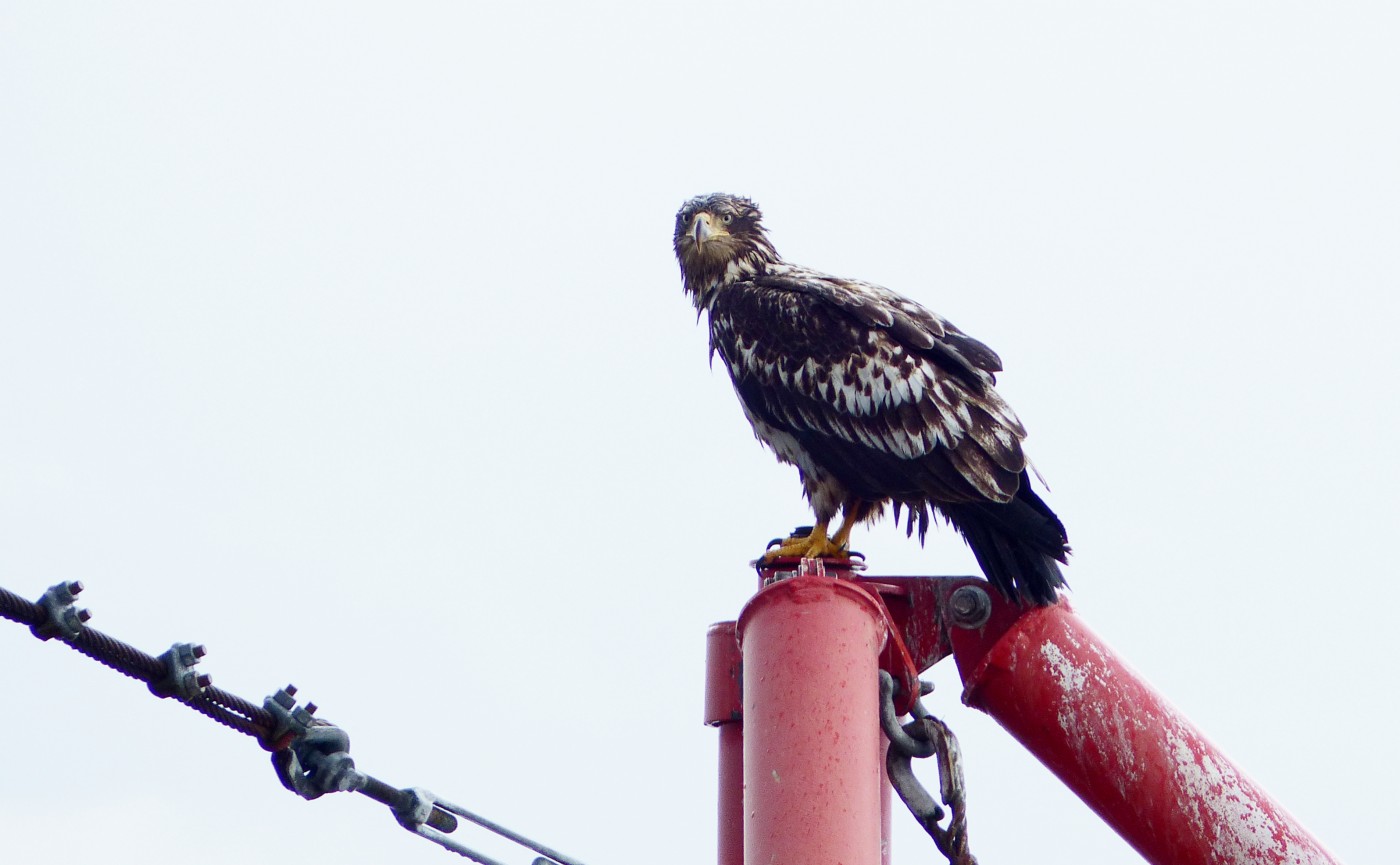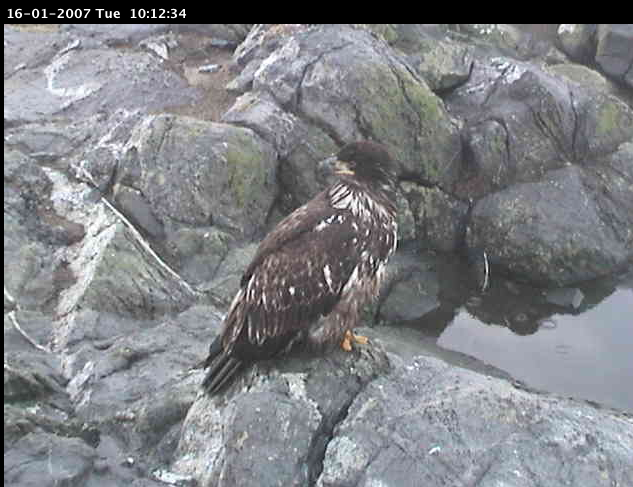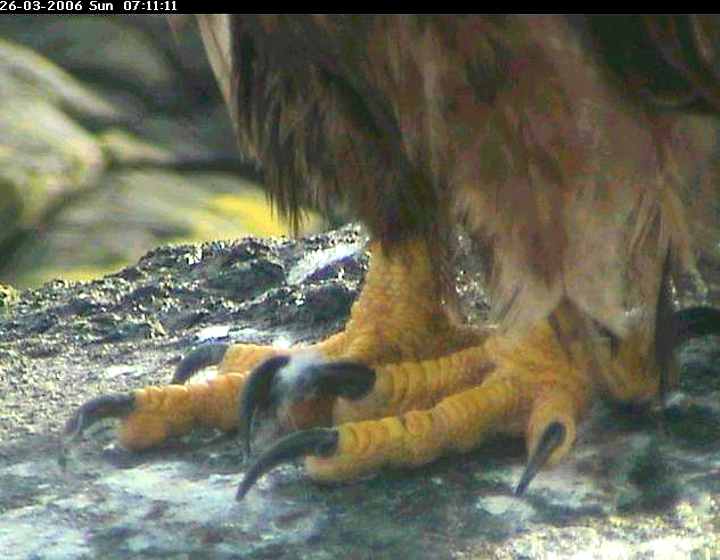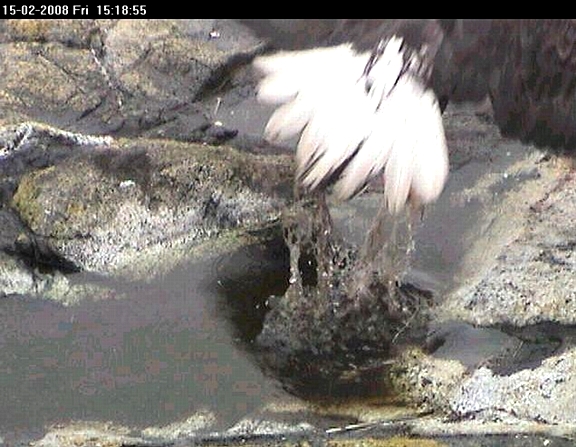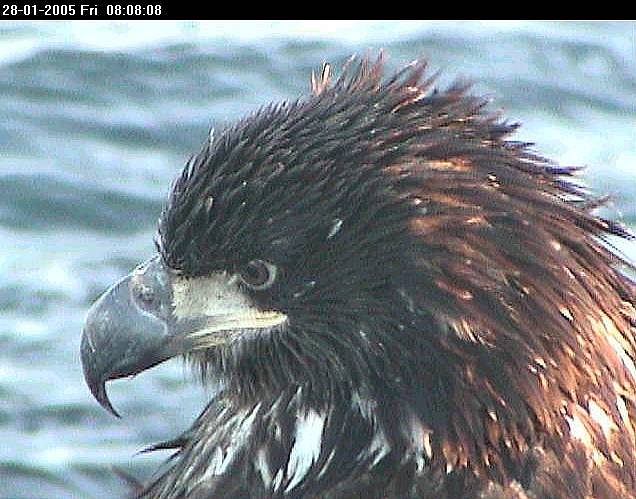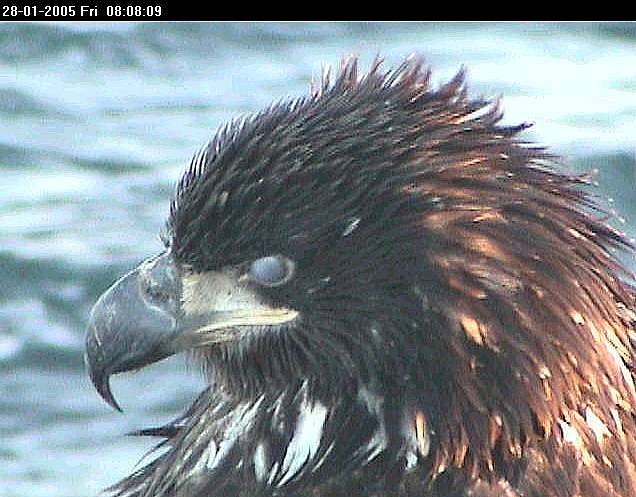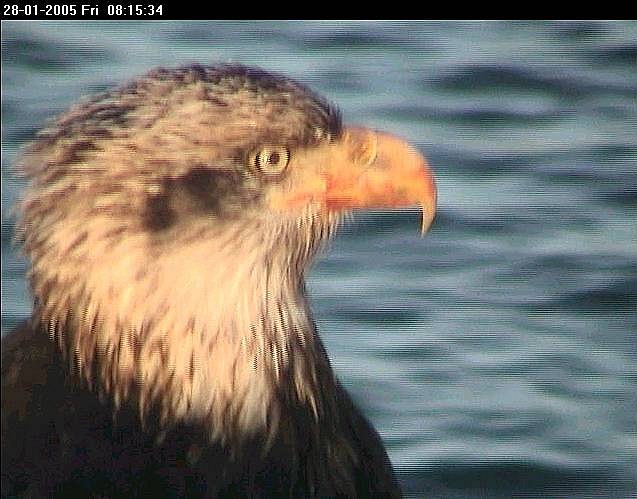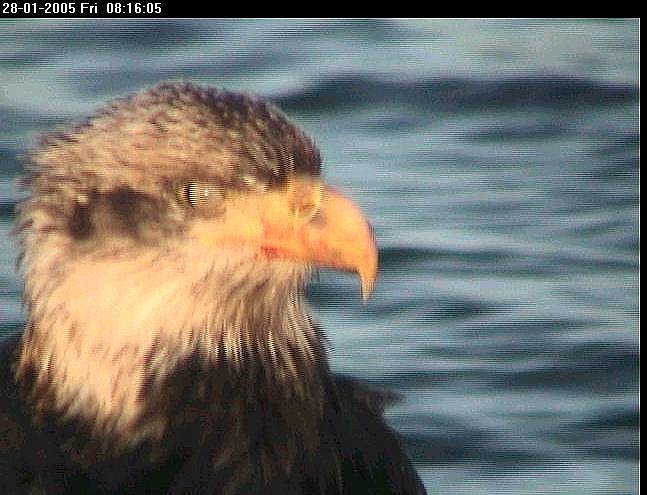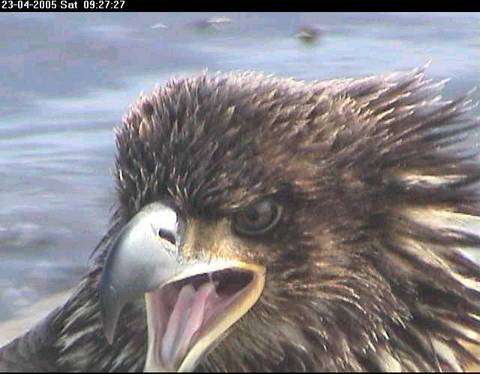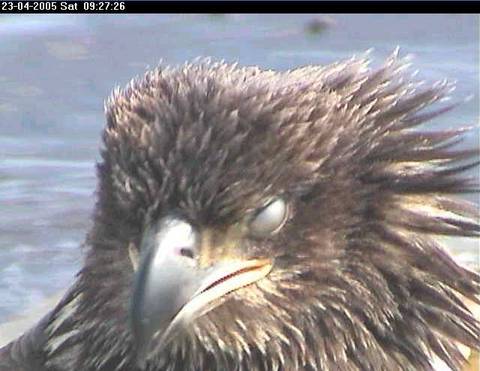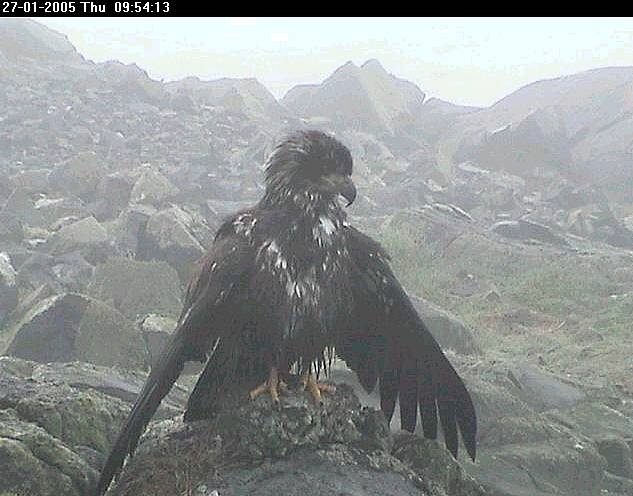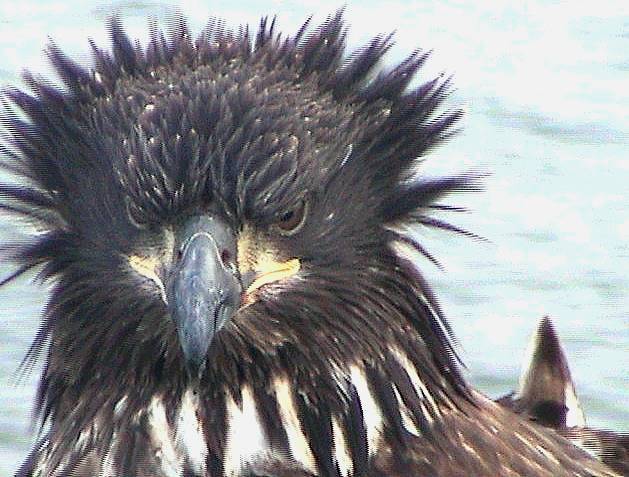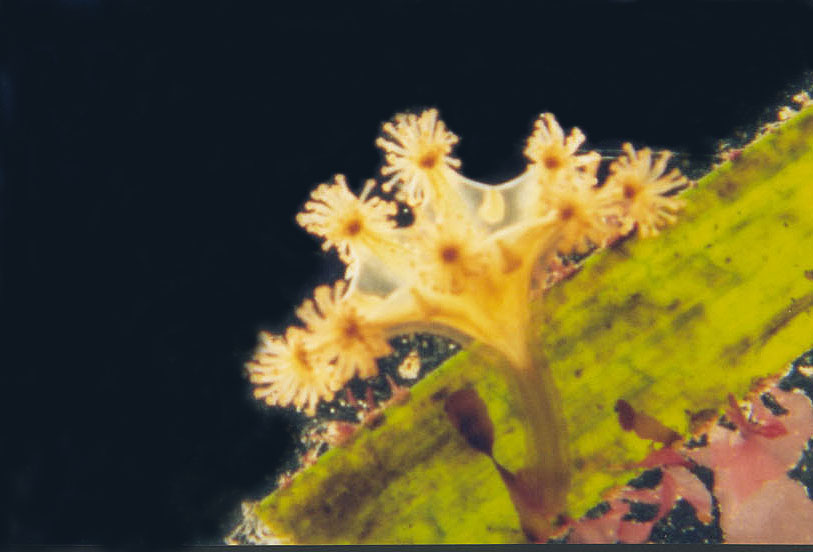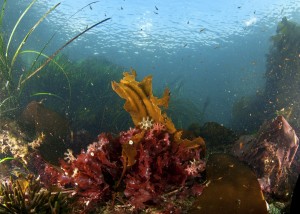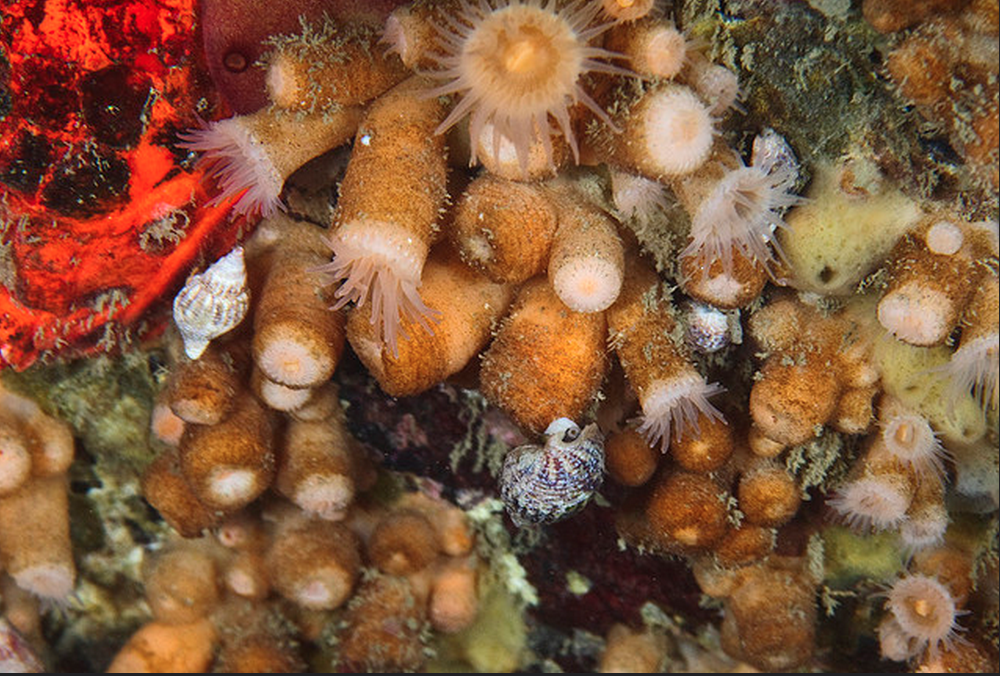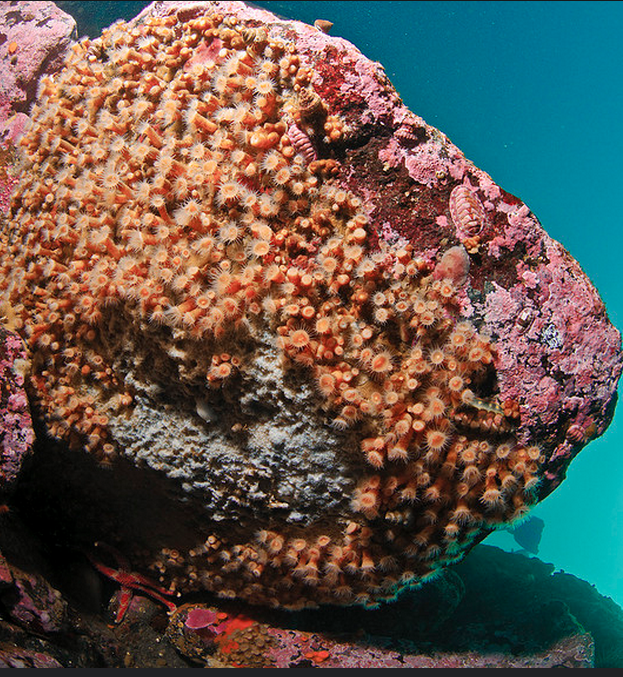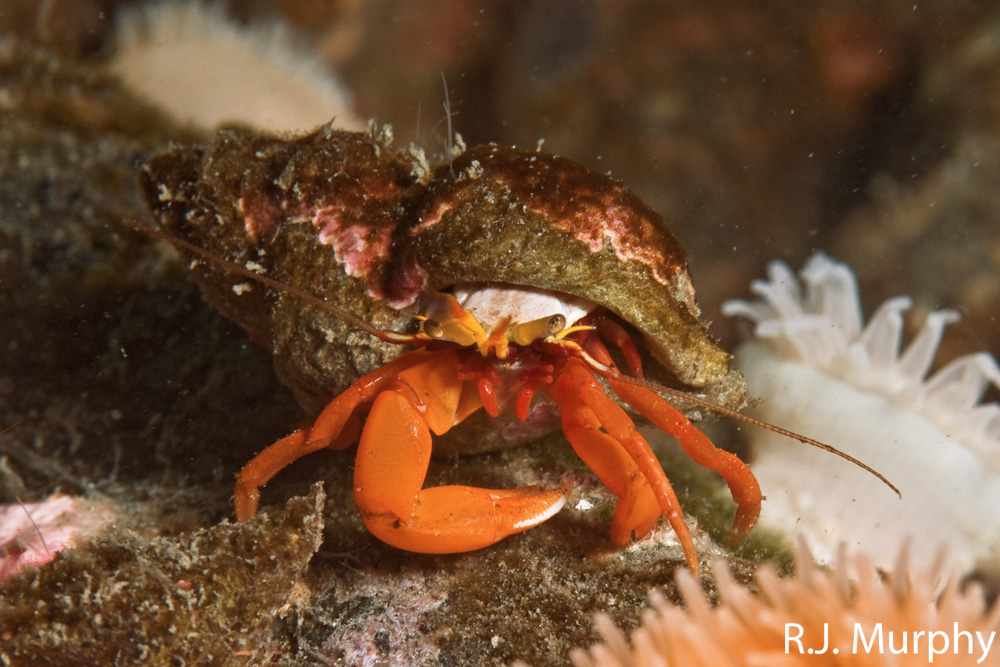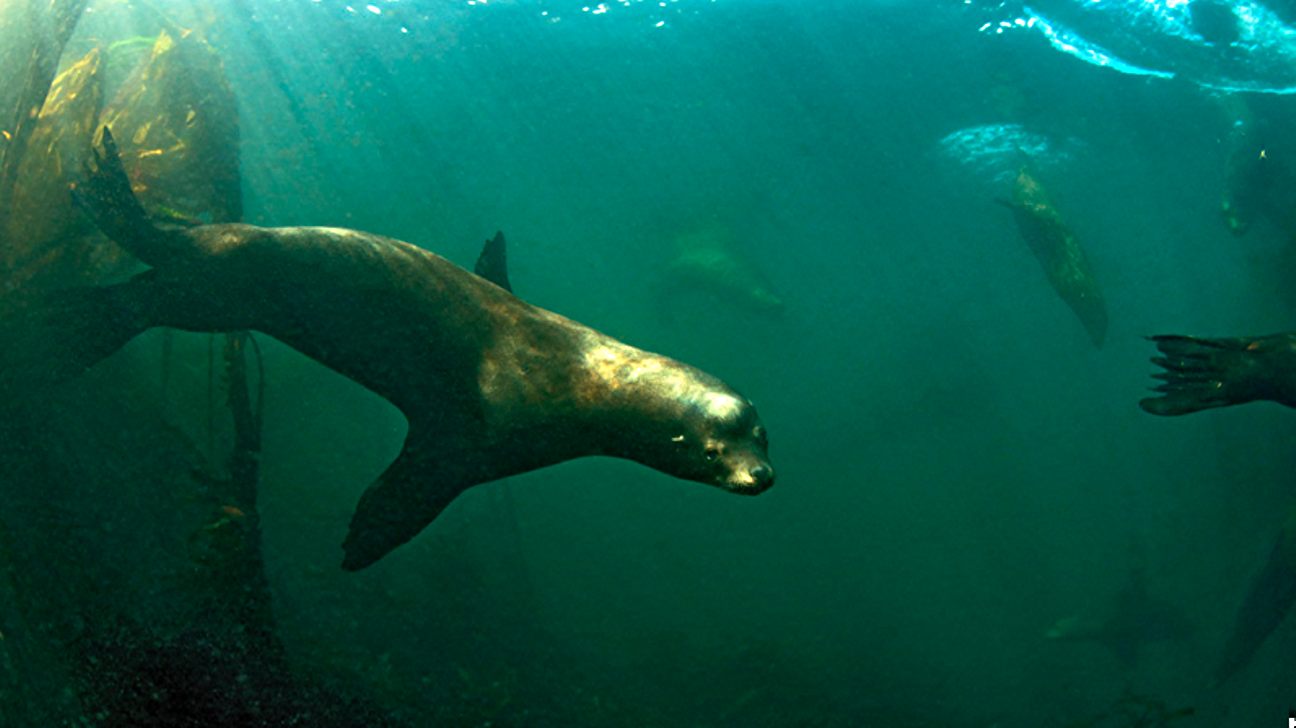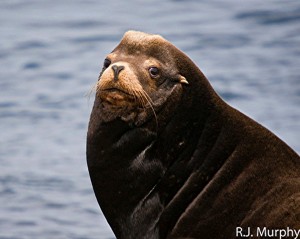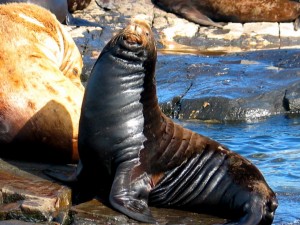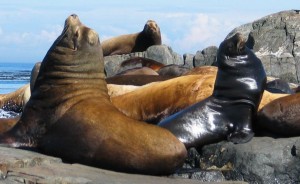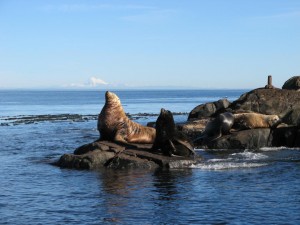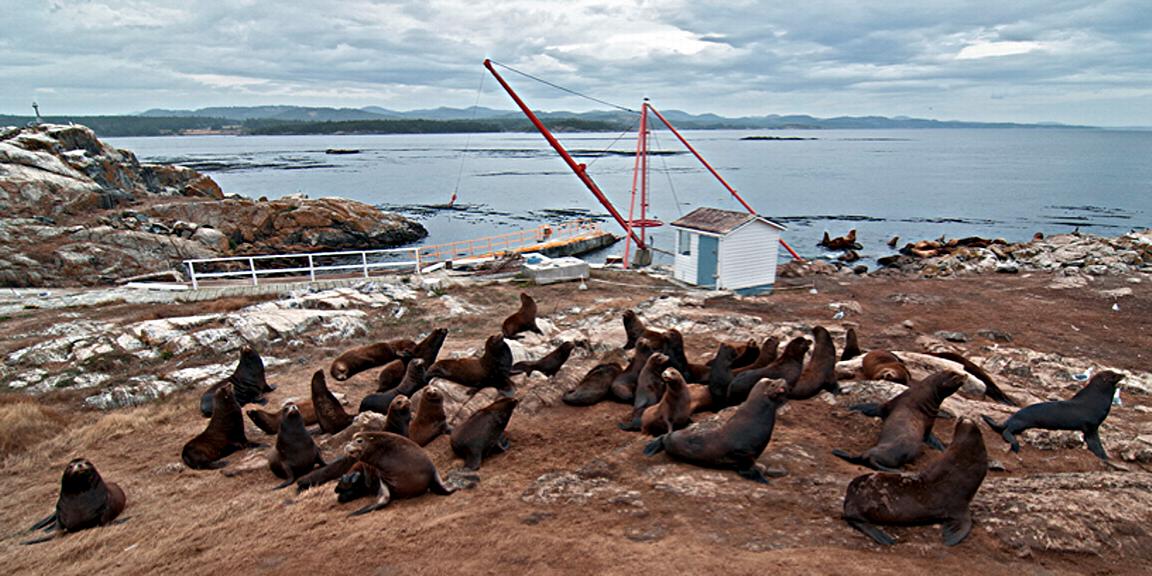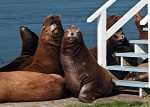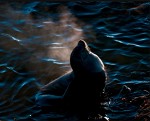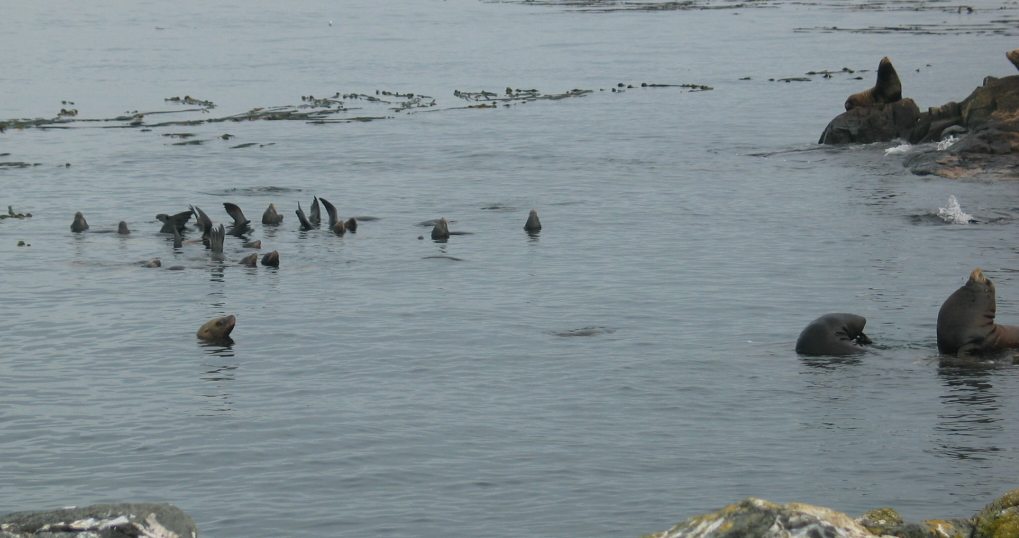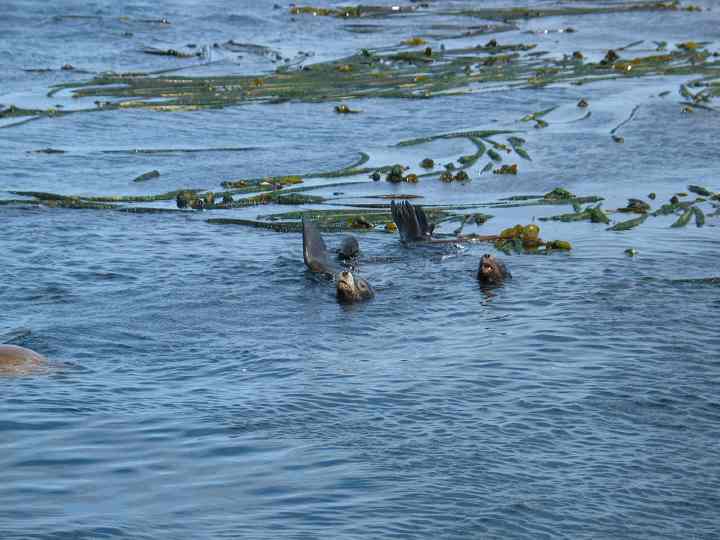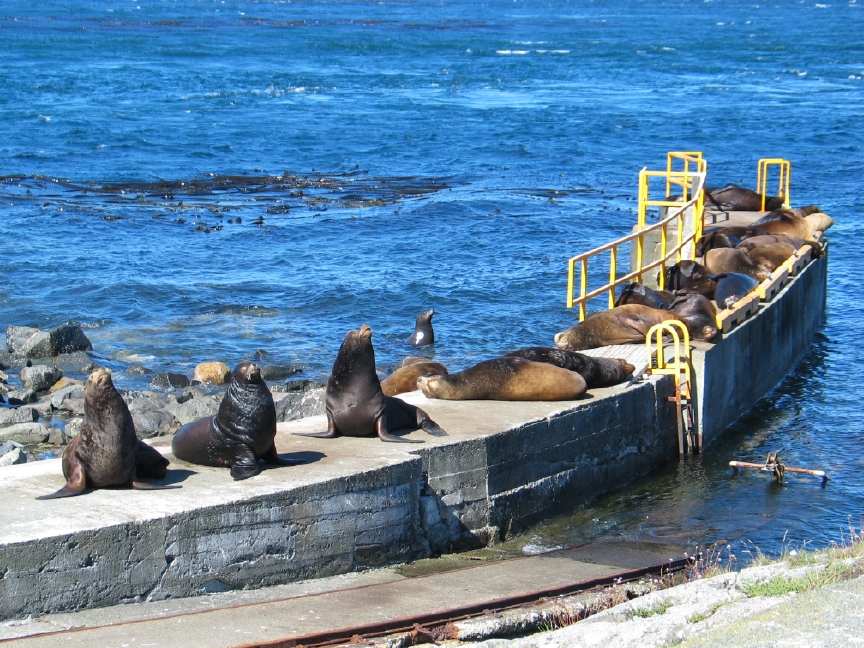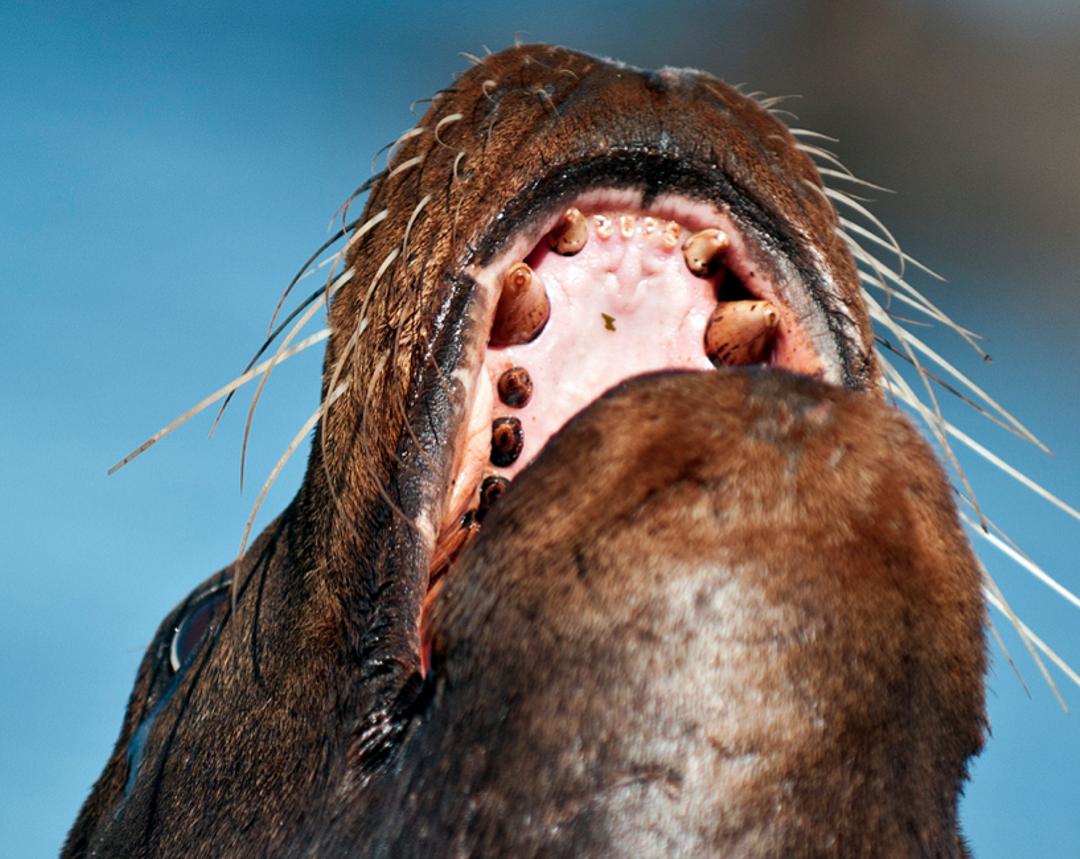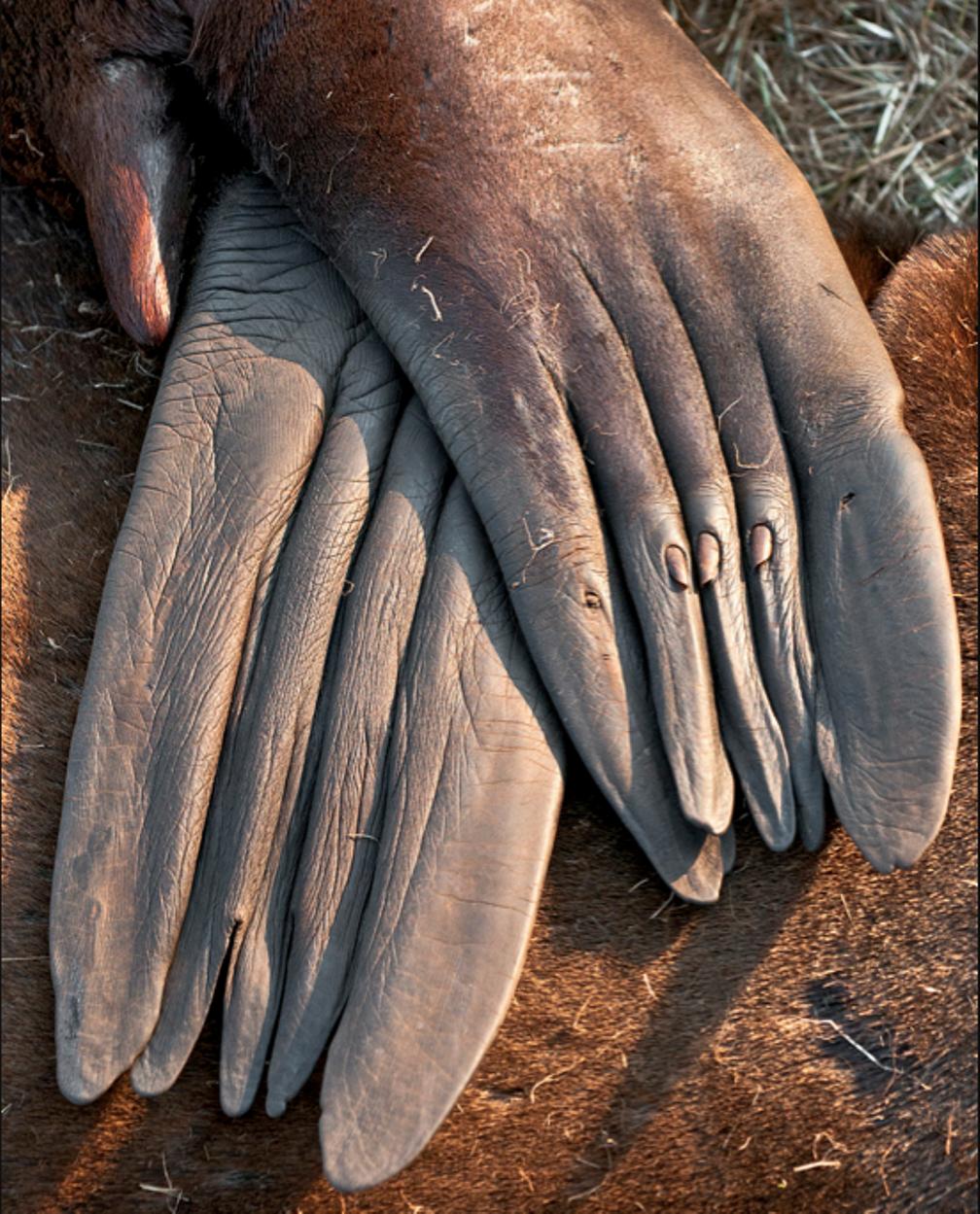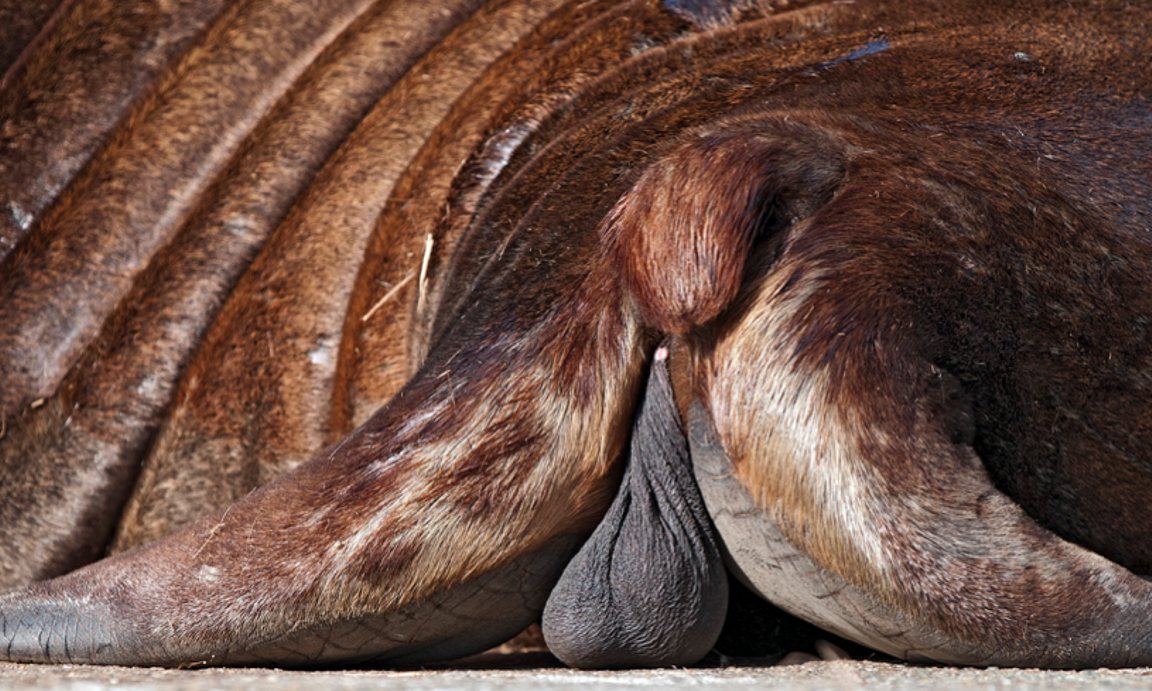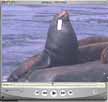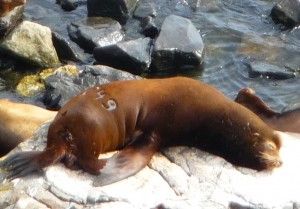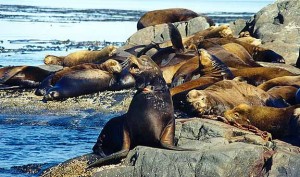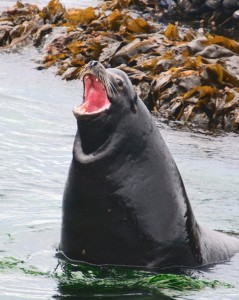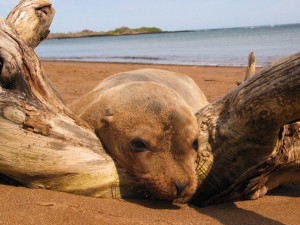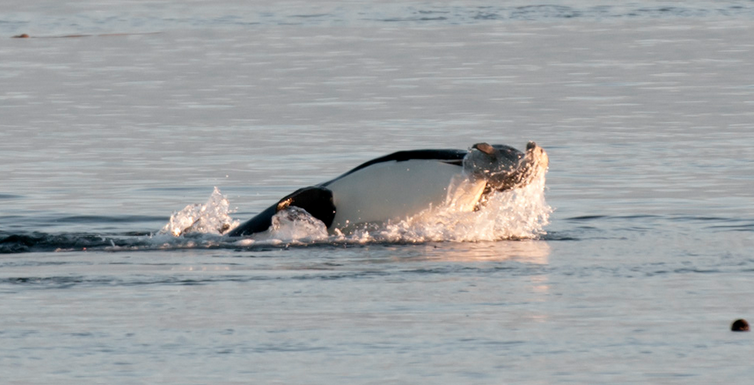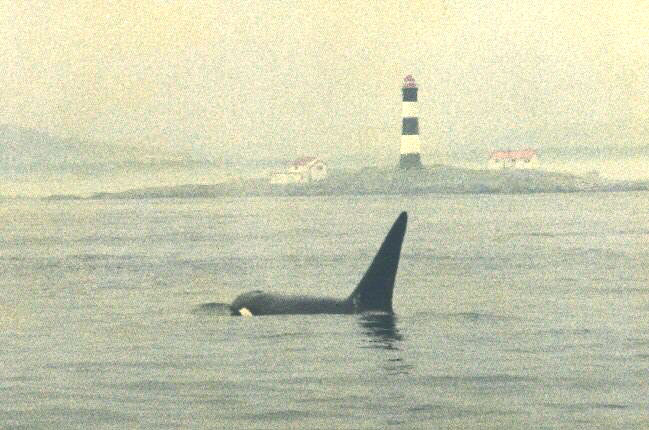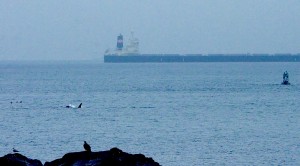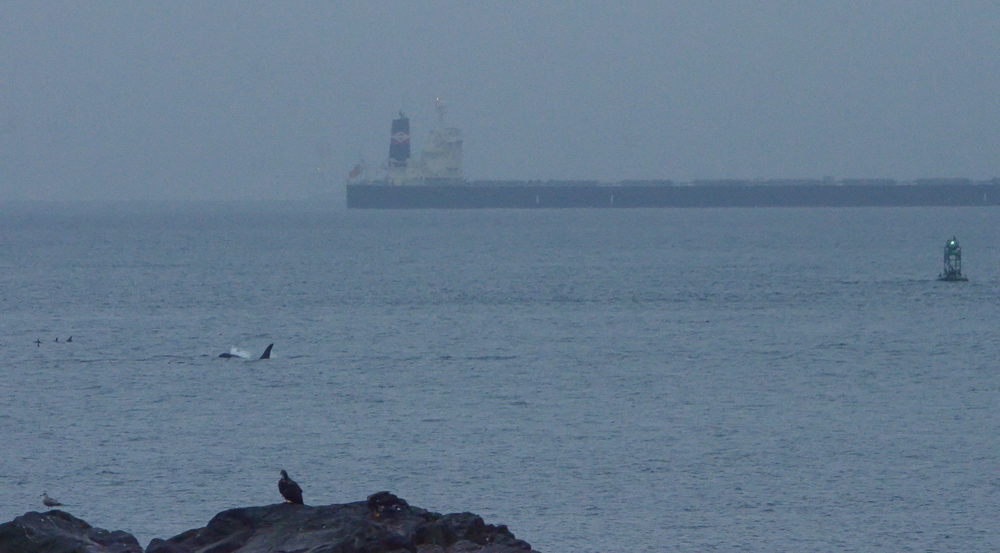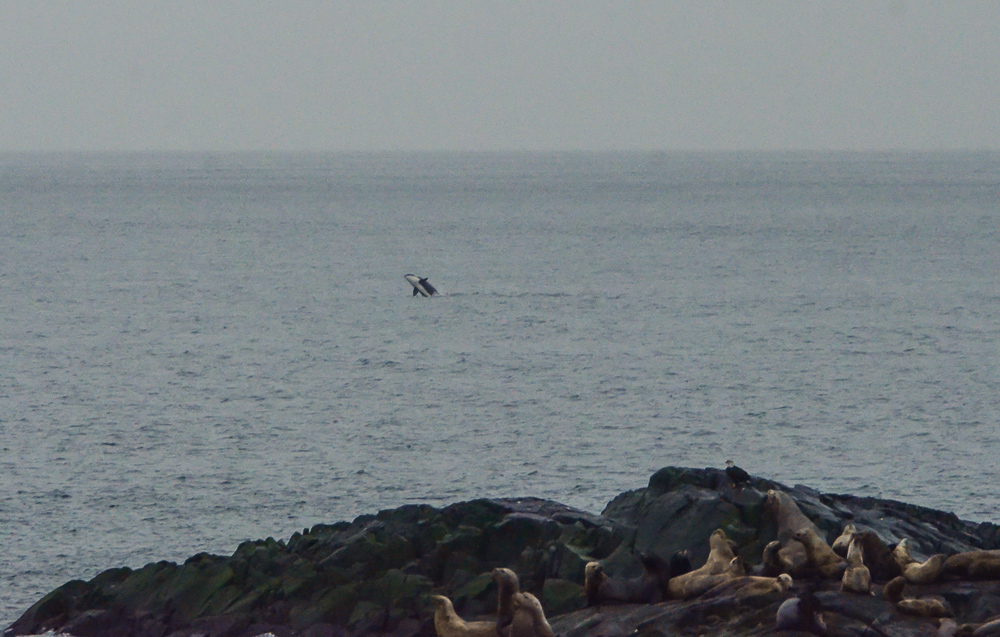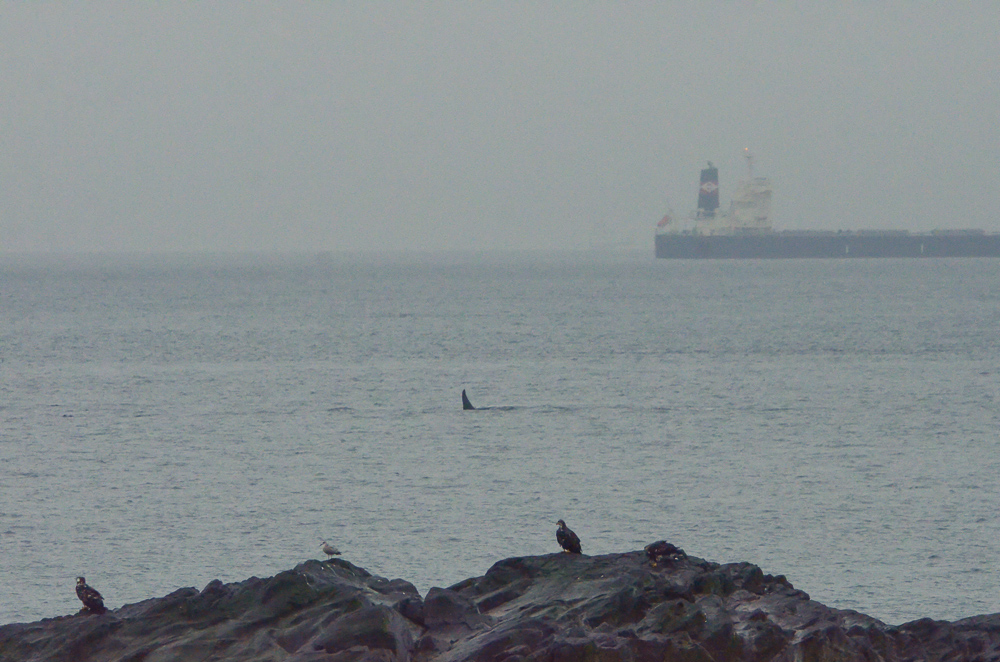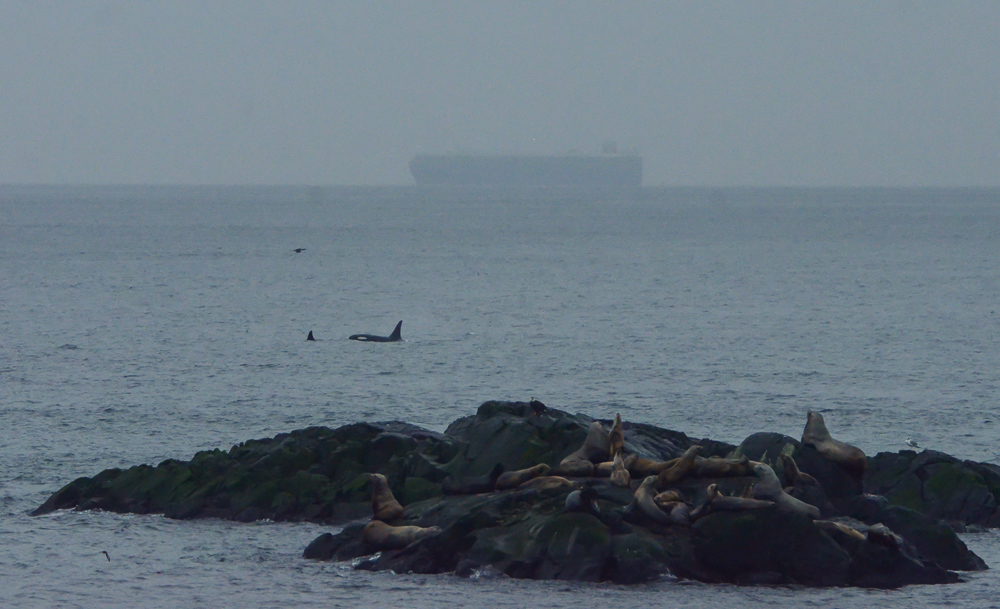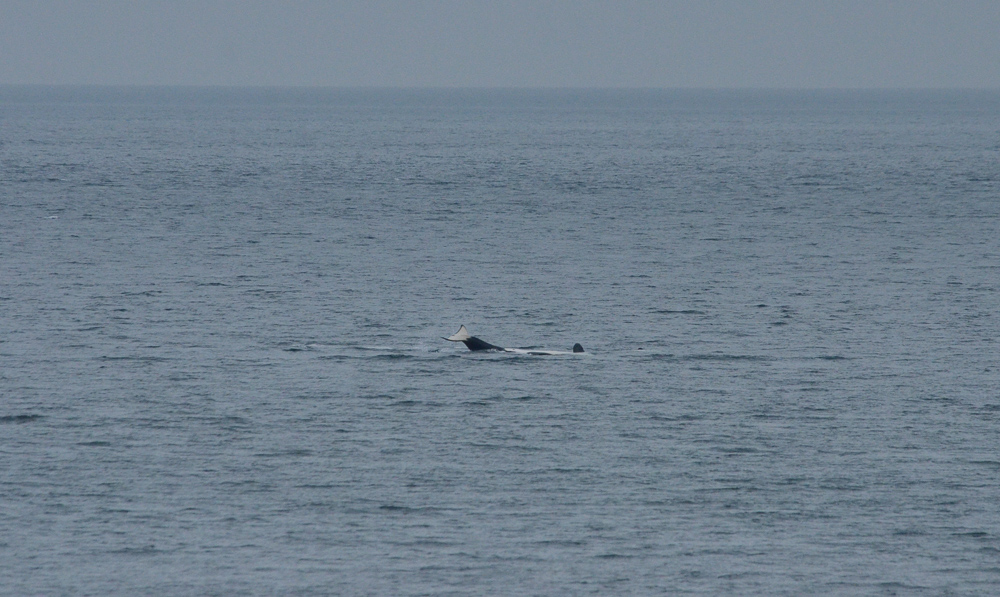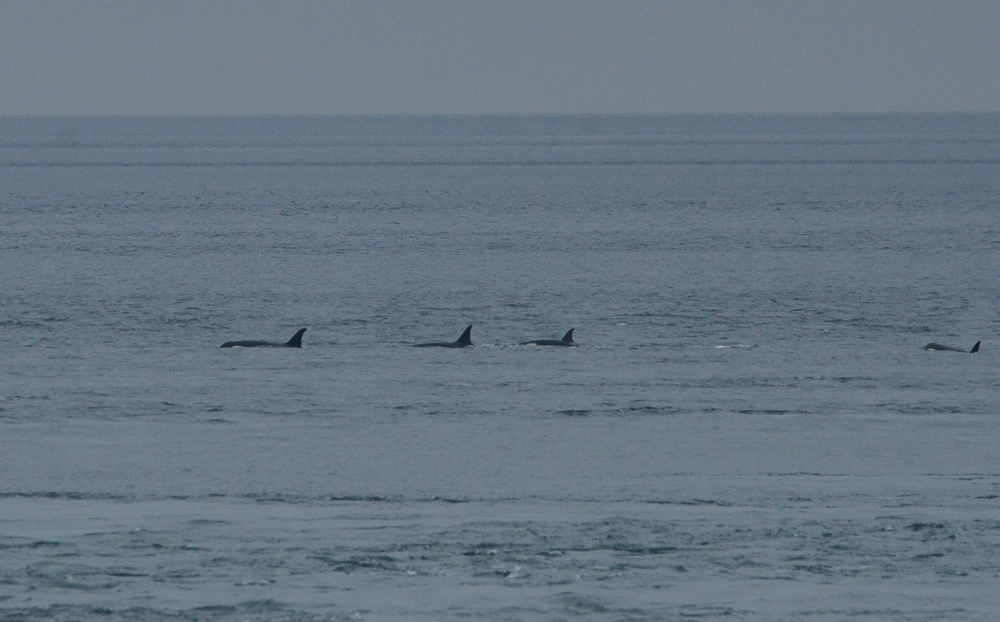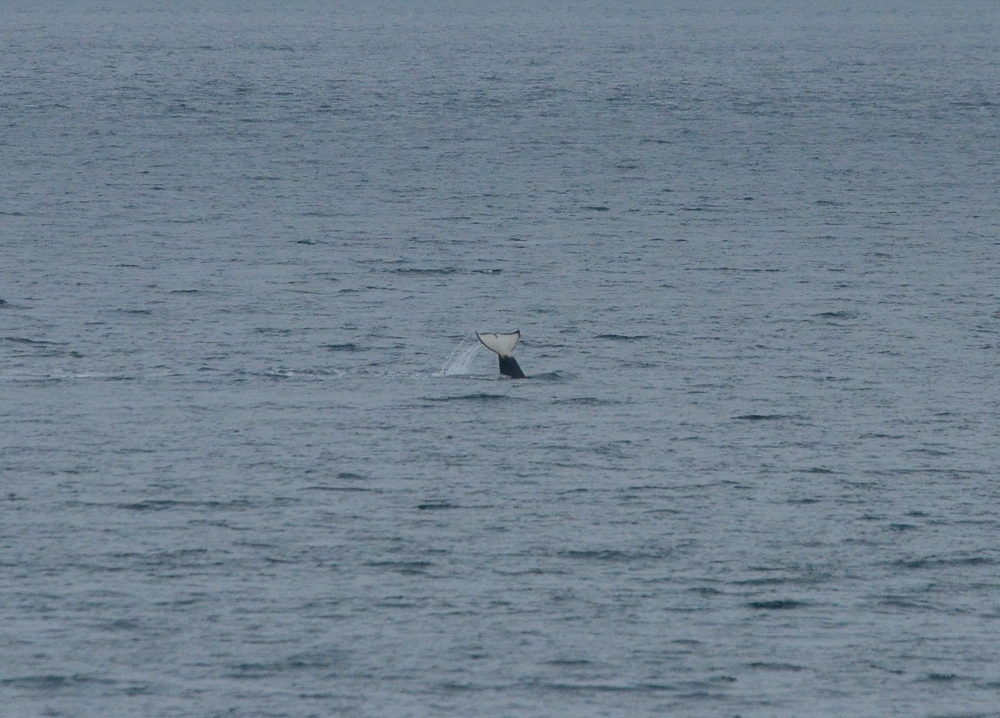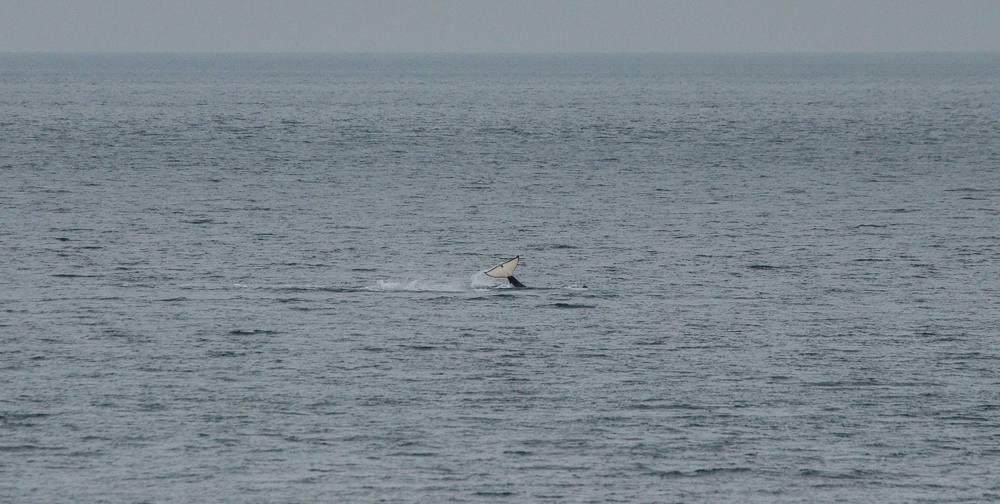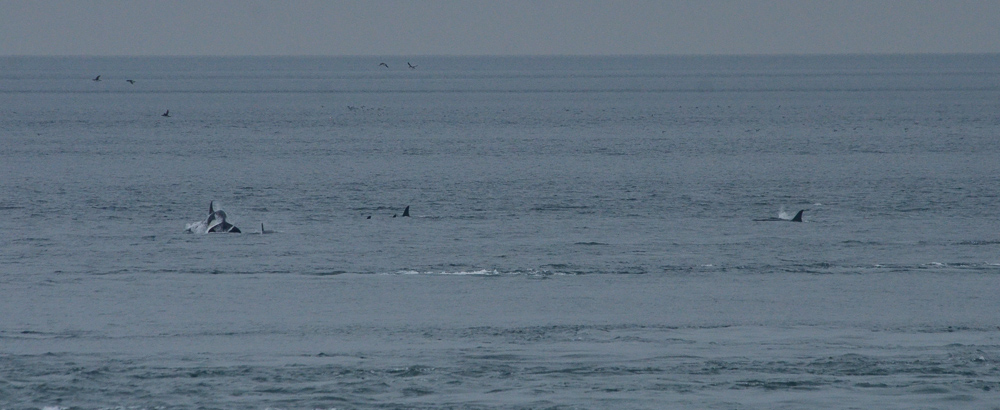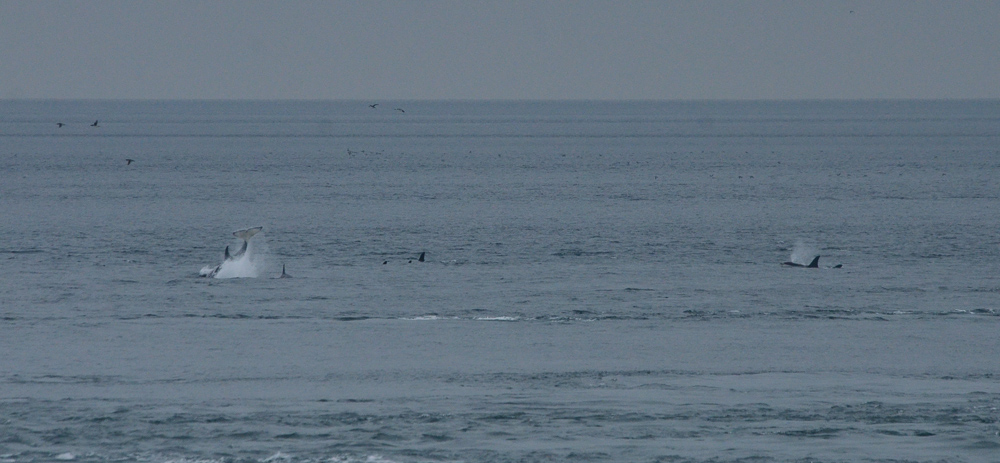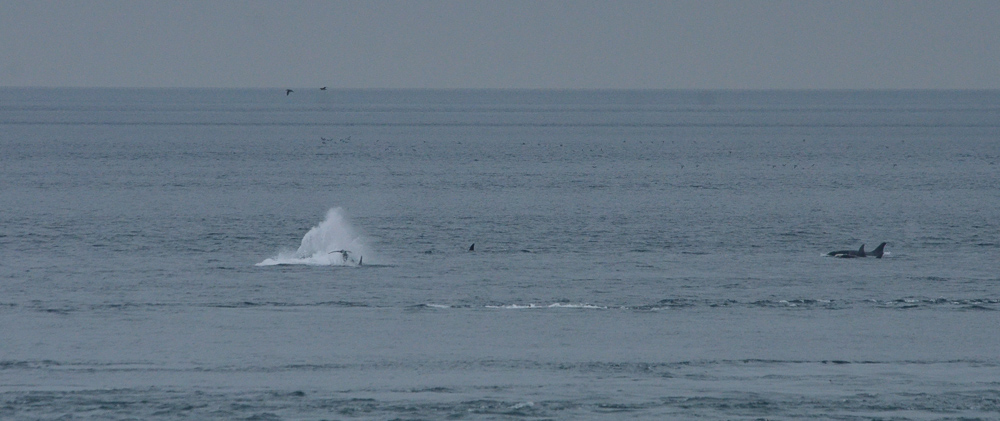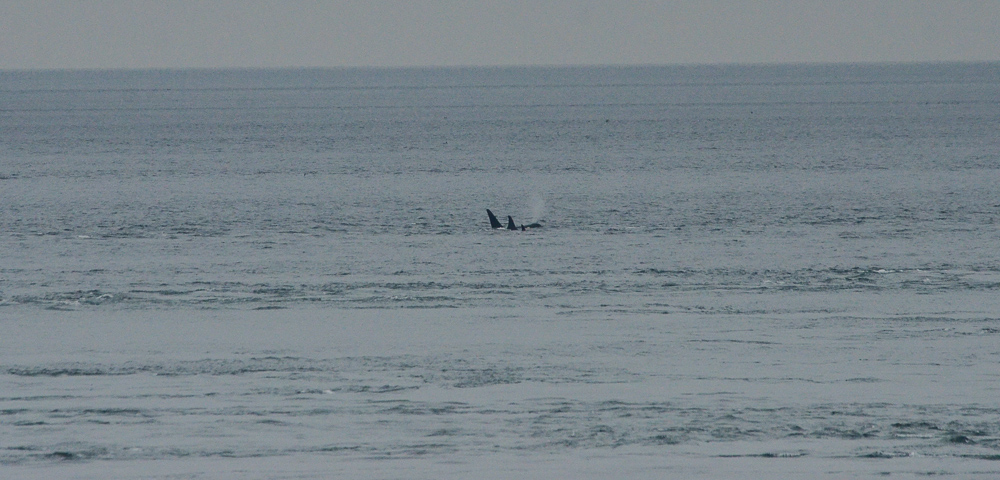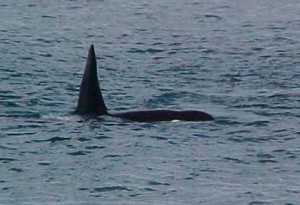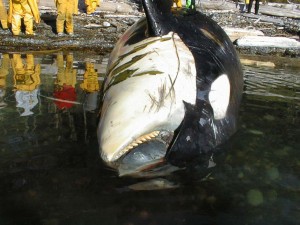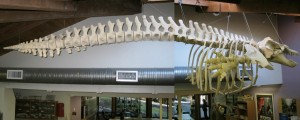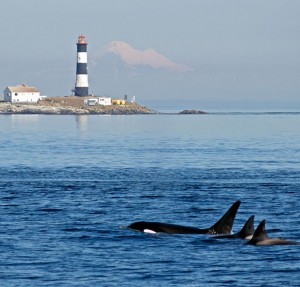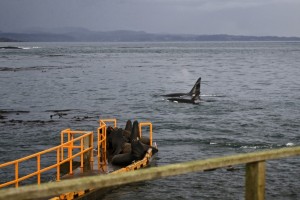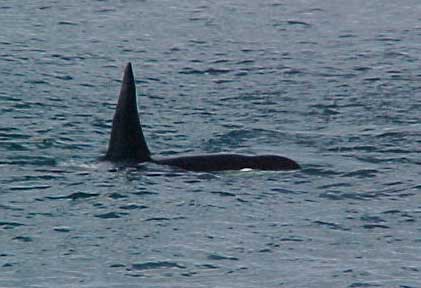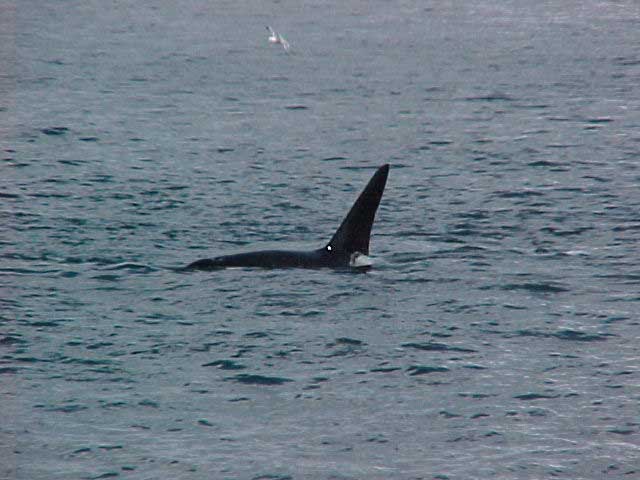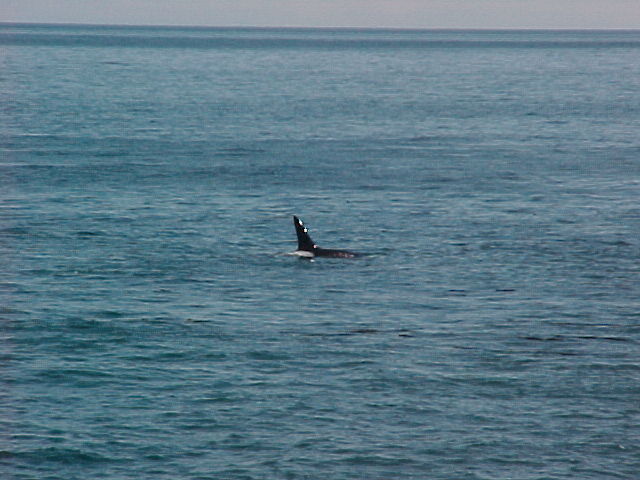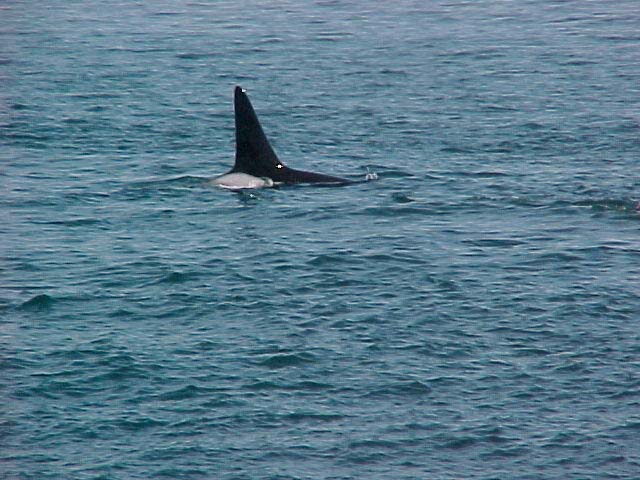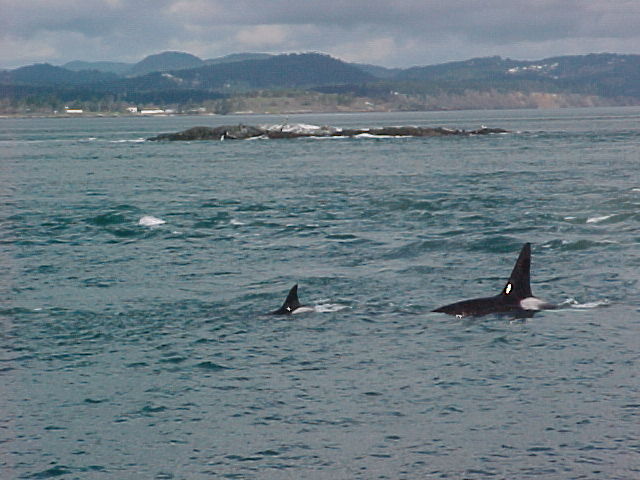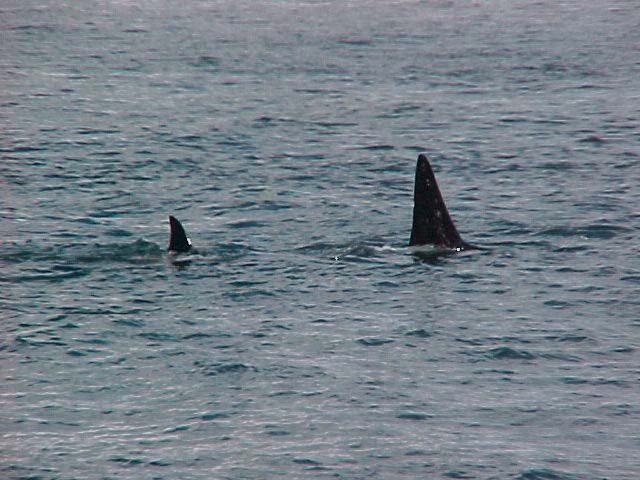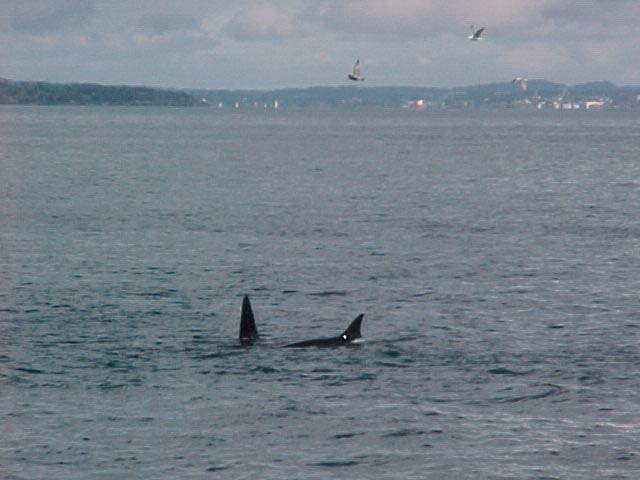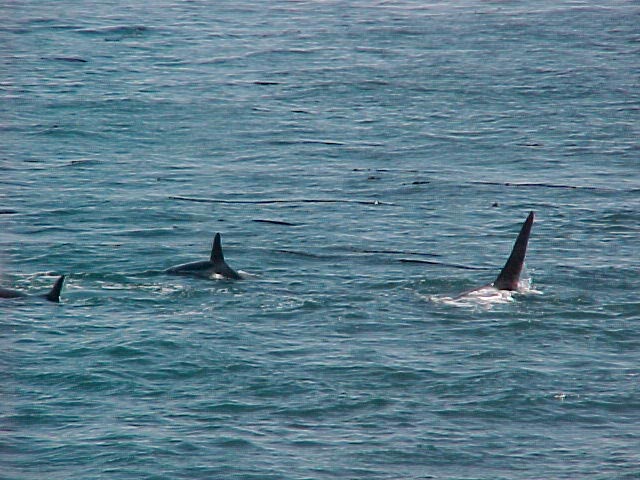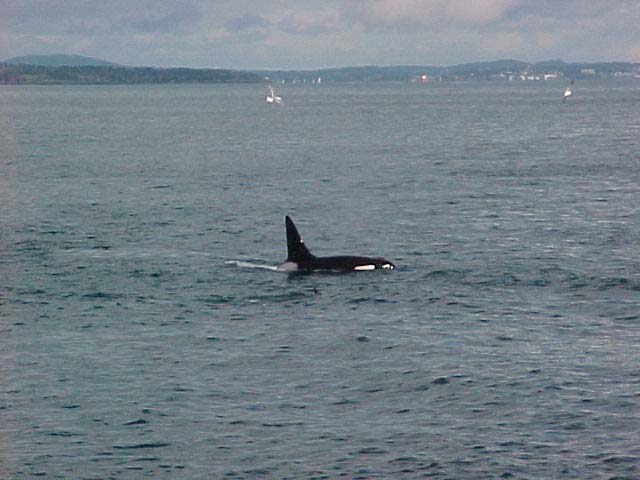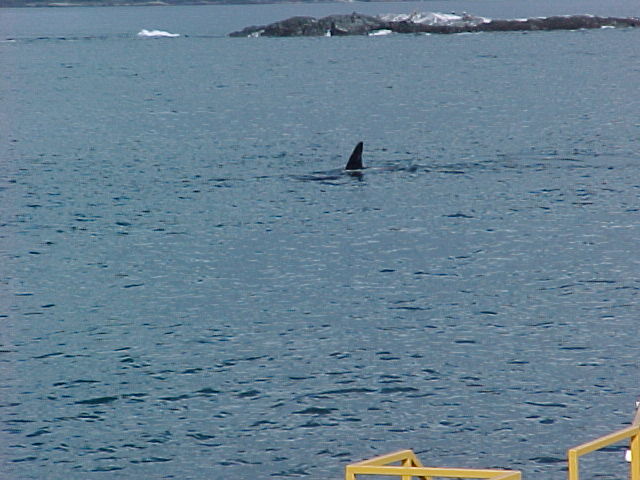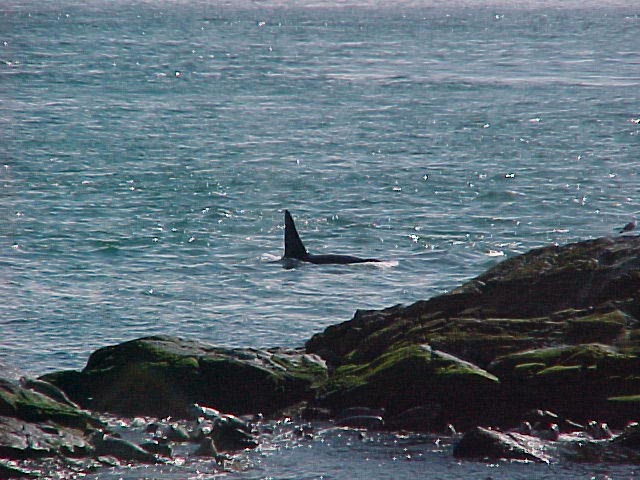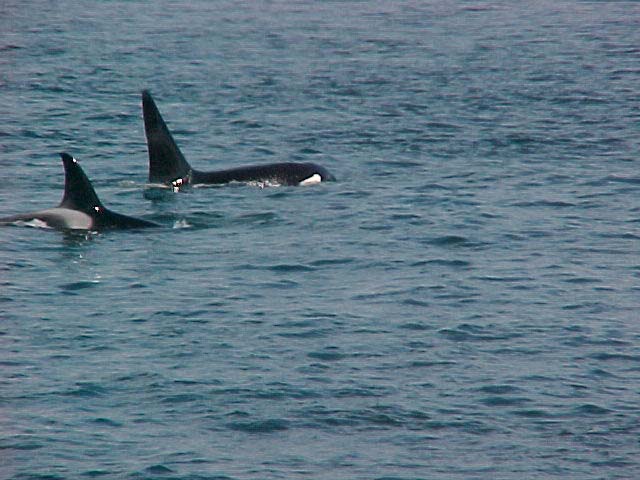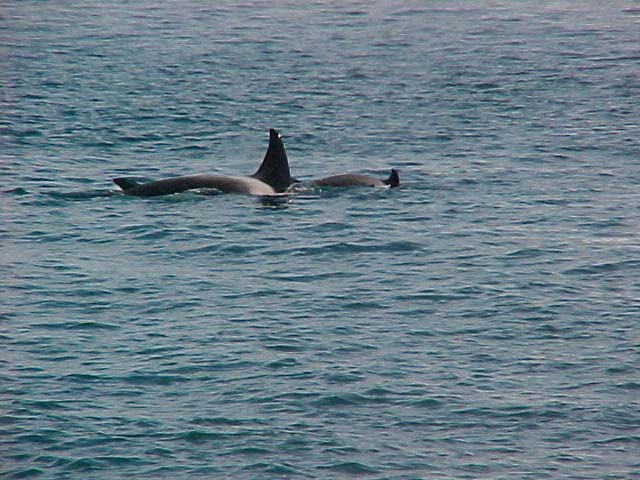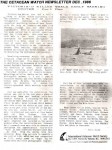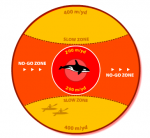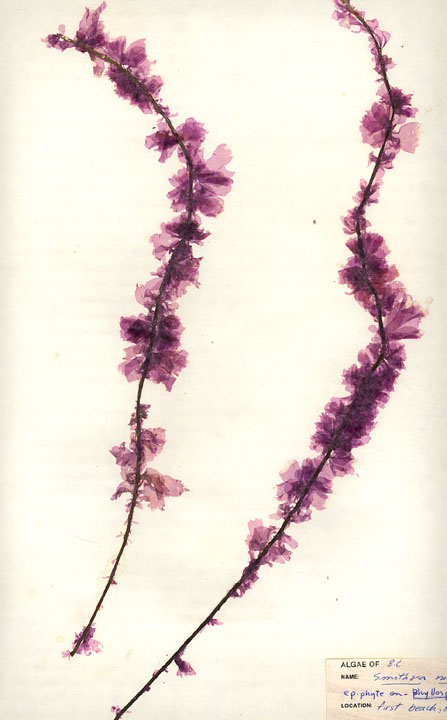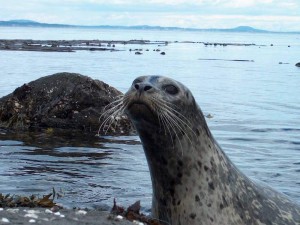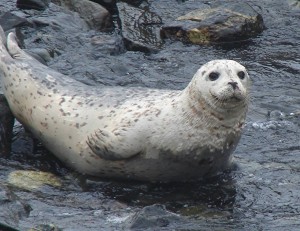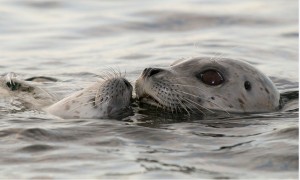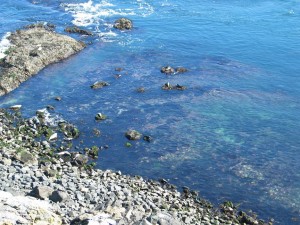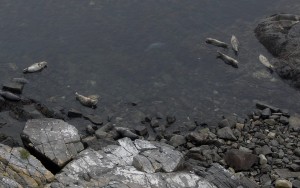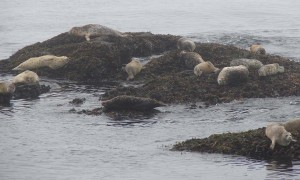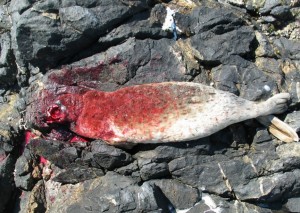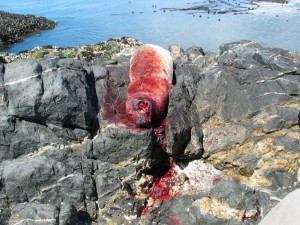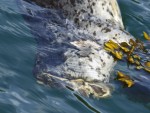December 16 Report
Race Rocks Marine Biology Project
By Garry Fletcher
Faculty Member, Lester B. Pearson College
Ecological reserve Warden for Race Rocks.
Education Director, racerocks.com
This report outlines the activities of the Race Rocks Marine Biology Program at Lester Pearson College from December 15, 2001 to December 15, 2002. During this second year of the Richard Ivey Foundation’s three-year commitment to this project, there has been on-going advancement in our project objectives. Additional funding has been forthcoming this year from the World Wildlife Fund, the Georgia Strait Alliance, a private dive charter group and a member of our Race Rocks Advisory Board. The provincial government has completed a long term lease agreement with us and is assisting us to upgrade the sewage system to a composting system and with repairs to buildings at the islands.
Project Objectives Report
Objective 1: To provide appropriate staffing and a pool of skilled volunteers who are dedicated to monitoring the local marine environment.
I have continued to devote part of my teaching schedule to educational work involving Race Rocks. I am in constant communication with Mike and Carol Slater, the eco- guardians at Race Rocks as they provide assistance in monitoring the cameras and computers and alert us to any issues involving enforcement of the guidelines of the reserve.
A further improvement to our Daily Log kept by Mike and Carol was developed this year. We were fortunate to have the volunteer services of Alec Matthews of the software design company WhiteAtom Design, work with us in the development of a database into which the daily observations of Race Rocks are entered. This now runs on a server on the island, with the added advantage being that in the database form, we are able to do reports on selected fields of the database. This makes our reporting to BC Parks and Fisheries more efficient, and allows us to link the content of the database to the resources on the web pages.
Chris Blondeau, our seafront manager, has been active with the college divers, teaching them underwater camera skills and adding to the underwater video library for the college. We have made a video of one of the incidents that Chris was involved with while assisting with the ongoing public education role which we conduct with the local community in the monitoring and enforcement of infractions in the reserve. http://www.racerocks.com/racerock/archives/vidfishing.htm
My two colleagues in the biology and environmental systems department Catrin Brown and Laura Verhegge have incorporated a number of the resources of the website and Race Rocks into their teaching program. We were able to webcast live two of their low-tide field labs last spring. A video was added to the education section of the archives that shows Laura’s first year environmental System classes doing their final exam at Race Rocks. http://www.racerocks.com/racerock/archives/videxam2002a.htm
The popularity among the students of the “new media” approach in education has led to an increase in demand for facilities to do video editing on campus. Examples of producing video on-line provided by the racerocks.com experience, led one of the students in the racerocks.com activity to produce video clips of our annual “One World Show .
I gave this same student a video camera when he went home to Kenya this summer. He was able to take his skills learned in the webcasting experience from racerocks.com activity and produce several excellent videos of the life of the children in rural Kenya. In the new year, the students of the activity will be live webcasting a bi-weekly program presenting events of the week at Pearson College.
The college has been able to set up a new computer media room for students to work on other video editing projects. Adding this option for our students has been a valuable spin off of the racerocks.com program. Sylvia Roach, another science faculty member is supervising the students involved with this option. We were also fortunate to be able to hire Scott Nichol this year. He is a software and web specialist who also helps us in sorting out some of the technical problems with the computers at Race Rocks.
Objective 2. To supplement environmental monitoring through 24 hr video monitoring through the racerocks.com website. Our cameras and computers set up in the Millennium project have served us well in providing continual live access to the islands resources through live streaming video.
In January of 2002, we were introduced by our contacts in Apple, to the computer software company Channelstorm and their software “LiveChannel” which we now use in webcasting on several of the cameras. http://www.racerocks.com/racerock/rrcom/livechannel/livechannel.htm
I worked extensively in collaboration with the software engineers of the company to adapt the webcasting software to our application. They have freely provided us with the software as they are able to use our site as a valuable example of the success of their software. After going through several Beta versions of the software, we now have a very useful tool for involving creative input from the students for our webcasts. On campus we have used it to broadcast the weekly International Affairs program and have webcast two evening performances for the International Day presentations on campus. At Race Rocks, we use it in the live webcasts from the portable camera and the students of the racerocks.com activity have developed expertise in this software and are now interested in expanding their use of it to provide a bi-weekly live web cast which will be a presentation of events of the week at the college.
Objective 3: To educate Pearson College students about the marine environment and to involve these students in a direct stewardship experience.
In October, our college hosted the CISTA schools conference. Four of the students of the racerocks.com activity gave 6 workshop presentations to the delegates. Their topic was the use of technology for Environmental Conservation as a method of Community Action. Since the delegates were made up of teachers and students from across Canada, the US and Latin America, they experienced a great interchange of questions and ideas. It was clear that the “ownership“ of the racerocks.com process, gave our students confidence in their role as environmental stewards, and this was clearly evident to the participants.
During our November Project week, this year, three of our first year students stayed at Race Rocks producing daily programs about the wildlife and the ecosystems of the island. They also were trained at that time to operate the MPA when our eco- guardians are on leave. As a result of their work several videos have been added to the archives. Two of the students had been in the racerocks.com activity , and the other student was already familiar with the editing video program so that they were able to do the video and editing work in the making of the following QuickTime movies.
Daily Duties For Assistants to the MPA Guardian
http://www.racerocks.com/racerock/archives/viddailyduties.htm
Tidal Variation at Race Rocks at http://www.racerocks.com/racerock/archives/vidrrtides.htm
Race Rocks Tour: with an English Version, an Arabic Version , and a German Version at http://www.racerocks.com/racerock/archives/vidrrvirtourara.htm
For some time we have been concerned with the effects of the demolition blasting at the nearby Department of National Defence facilities on the marine mammal and bird populations at Race Rocks. It has been our belief that mitigation of this impact could be done by controlled levels of blasting and proper timing. On November 7, 2002, the DND were still doing their demolition blasting exercises at Bentinck Island. These students were able to video the images of the impact of these blasts on the first day from the science centre window and on the second day from the top of the light tower. In the tower, they interviewed Mike Demarchi of LGL who is currently doing a contract for the Department of National Defense to monitor the impact of these blasts and to compare them with other disturbances at Race Rocks. This video will help in public education and is now included in our marine mammal archives at: http://www.racerocks.com/racerock/archives/vidlionblasts.htm In doing the work, they had a keen sense of the role that they were providing in terms of our on-going stewardship of the island and they felt they had contributed by this process.
The spring 2002 field lab program was completed with involvement of the following students in direct contact at Race Rocks.
Spring 2002- 40 Biology first year students in three classes were involved in field research at Race Rocks. They did a population study in tidepools and an invertebrate survey.
Spring 2002- 30 students of Environmental Systems did several field labs on intertidal transect methods.
Fall 2002- In orientation week ten students were involved in a program of interpreting Race Rocks Live by webcasts for an afternoon at Race Rocks. These webcasts were viewed by other students as an introduction to Race Rocks
These environmental systems students also did their final exam on the island in May of 2002 and
Fall 2002 – 36 students in first year biology did an introductory field survey at Race Rocks.
In May 27 of 2002, I was invited to participate as a finalist in the New Media Awards ceremony in Toronto, having been nominated in the category of Educator of the Year.
While there, I was able to visit the offices of the World Wildlife Fund in support of an application for funding from this organization. Visits were also made to the Ontario Science Centre and the Royal Ontario Museum to investigate the possibility of getting our educational resources available through the internet to these institutions.
Objective 4: To lead environmental field trips for local school children to Race Rocks. Our school trips have been reduced to lessen the impact on the island but we have continued with using a system of student “reporters” from a school :
In June three groups of such students went with us to Race Rocks where our students provided an informative introduction to ecology of the organisms at Race Rocks. This 17 minute video shows the kinds of experiences they have while out in the field, http://www.racerocks.com/racerock/archives/vidwestmont2a.htm
The complete webcast went live to their schools and to other schools who could be on line. We also re-webcast the tapes of the sessions several times.
Objective 5: To facilitate marine education programs for schools across the country and internationally through racerocks.com
In March a major project was undertaken at the request of the Apple Learning Interchange. Apple Computers were planning to set up a “Gallery of Best Practices” on their website. We were invited to provide the resource materials detailing our innovations at Race Rocks for this special website. Race Rocks is currently the featured exhibit and can be found from the education links to the Apple Learning Interchange at http://ali.apple.com/
The gallery is set up to encourage others to try to incorporate this form of resource into their own instructional program.
An outline of the exhibit follows:
Introduction: I provide an introduction by video of the way that Apple Learning Interchange is providing the distribution network making it possible for thousands of student connections per week. I explain that this exhibit will provide you with a glimpse of our educational programs, the technology that makes it possible, as well as ideas to help use our resources in your classroom.
The Lesson : Here you will find an example learning activity that we use in our curriculum entitled: “A Project to Establish a Digital Taxonomic File.” We have also included a learning activity contributed from the Apple Learning Interchange which may give you ideas on how to use our live video streams and web resources in your classroom. A weblink to an index of files that may be useful for statistics labs in biology or environmental systems and a link to the new section on resources for the Jason project are included.
Assessment : As well as showing the video on the environmental systems exam, a video with Garry and Laura discussing assessment is included: “ Every Field Lab in which the students are involved at Race Rocks becomes part of a portfolio of student work which is graded according to a number of criteria, as suggested by the International Baccalaureate Science Syllabi. We are particularly concerned with observational and interpretational skills, although manipulation, attitude, and planning skills may also be assessed. This first video presents a short discussion on assessment between Garry Fletcher and Laura Verhegge, faculty members in Biology and Environmental Systems at Lester B. Pearson College.
Student Work : In this file Example Student Research videos are highlighted. Rocks Island is a valuable component of the IB Environmental Systems and IB Biology curriculum at Pearson College of the Pacific. This island research center makes it possible to immerse students in real inquiry as they investigate ecosystems both on the surface of the island and below the surface of the surrounding water. Students work in small groups often with visiting scientists adding to the growing knowledge about life at Race Rocks. It is also possible for students at remote schools to participate in observational research and to join live reports by the students and staff at Pearson
Reflections : Video segments of students and the faculty discussing their experiences are provided.
Administrative Support: Angus Matthews provides an administrators perspective on the program, encouraging other educational administrators to take the leap and get involved in programs like this because of the spin-offs possible to other aspects of education.
Resources: This site summarizes the links to the racerocks.com website which relate to education in four areas
A) Race Rocks Ecosystems
B) B) History of Race Rocks
C) Video
D) Communications
http://www.uwc.ca/racerock/aliassets/resources.htm
Technology: I use an annotated slide show, to explain how one can use Apple streaming technology to share their local ecosystem with the world. By following through the process of how we use technology on the islands, a model is presented for similar projects as part of educational programs elsewhere.
Background :Maps showing location and a profile of the history of the racerocks.com project are provided in this section.
In the fall of 2002 we took on an added responsibility, that of being the Canadian content provider for the Jason Project . http://www.racerocks.com/racerock/jason/jasonproject.htm
With Assistance from the Jason Foundation, we hired Jane Johnston, to do the middle school level curriculum level work to bring together the resources of our site into Lesson Plans. These are now being made available on our website and are linked to the Jason website which is subscribed to by 70,000 teachers in the US.
Special curriculum guides are being developed for:
1. Geology and Geography (Abiotic Characteristics at Race Rocks), http://www.racerocks.com/racerock/jason/abiotic/t_instr.html
2. Preserving the Past and Present Culture of Race Rocks (The Thirteen Moons), http://www.racerocks.com/racerock/jason/firstnations/t_intro.html
3. Maintaining our Coastal Ecosystems (An Ethology),
4. The Northern Abalone, http://www.racerocks.com/racerock/jason/abal_seastar/t_info.html
5. Pinnipeds, http://www.racerocks.com/racerock/jason/pinnipeds/seal_sealion_differ.htm
6. Conservation.
The production of the Race Rocks taxonomy is a curriculum development event that has consumed a great amount of my time this past year. http://www.racerocks.com/racerock/eco/taxalab/taxonomy.htm
This is a collaborative project with students and we have the goal of eventually achieving a comprehensive linking of all the information and media resources for all the organisms of Race Rocks. In the late fall and early spring terms 44 biology students contributed their records and 21 Environmental Systems students. This is currently being added to with another 48 biology students and a further 30 environmental systems students in the next term. By the end of next term, our taxonomy index will have grown to almost 150 species. I emphasize to the students that this “digital legacy” which is a valuable addition to the management of this ecological treasure. These students are all exposed to a varying degree of research in doing these assignments, and it is anticipated that the end product after several years will be a unique addition to the efforts for conservation of Biodiversity in the area.
Objective 6: To facilitate marine research projects by providing facilities and volunteers at Race Rocks.
Three current first year students from Pearson College and Ryan Murphy, who graduated last year stayed at the Marine Science Centre for the first two weeks of June 2002. http://www.racerocks.com/racerock/rrcom/june02/webcrew.htm
Ryan had returned to Race Rocks assisted by a research grant from Mt.Allison University to do research on the macroalgal community. He was able to amass over 400 digital images of the macroalgae of Race Rocks in his underwater and intertidal photography for a digital herbarium project he is doing for the unversioties biology department . He also produced two algal videos for our archives: http://www.racerocks.com/racerock/archiveplants.htm
The students conducted daily live and prerecorded webcasts with me from the intertidal and from underwater using camera 4.
For one of the webcasts we were joined by Sean LeRoy, Graduate Researcher, Georgia Basin Futures Project Sustainable Development Research Institute, University of British Columbia and Dr.James Tansey also of UBC. They came to participate in the webcast with Garry and Ryan on Marine Protected Areas in New Zealand and Canada with Tim Langlois, Leigh Marine Laboratory University of Auckland, and Anne Saloman, University of Washington, Zoology Department.
Two university students have completed their Master’s Thesis on Race Rocks with our assistance over the past year.
Sean Leroy of the UBC School of Community and Regional planning UBC, mentioned above, did research on Public Process and the Creation of a Marine Protected Area at Race Rocks British Columbia http://www.interchange.ubc.ca/aleroy/Portfolio/549C.html
As members of the Race Rocks Advisory Board, myself and Angus Matthews had provided our insights into the process in interviews he had conducted in the spring of 2002.
In 2002, Taco Niet finished his Masters degree in the Engineering Department’s Institute for Integrated Energy Systems at the University of Victoria (IESVic)
http://www.racerocks.com/racerock/archives/vidtaco2a.htm
As a result of his work, several visitations have been made with Individuals and Companies who are interested in promoting the use of Alternate Energy at Race Rocks. Currently the Friends of Renewable Energy, BC (forebc.com) has taken up with the considerable enthusiasm the idea of a renewable energy cooperative and representatives will be making a site visit with me next week.
We have continued to provide assistance to Dr. Anita Brinckmann-Voss for her hydroid research. In July, I assisted another researcher who was working on hydrocoral to get samples from Race Rocks. Alberto Lindner is a Brazilian student in a Masters program in Duke University. He is now involved in analyzing the samples to determine if through DNA evidence, the two color morphs of Allopora can be designated as separate species or whether as can be determined by standard methods, they are actually the same species. His report and his masters thesis on this will be linked to this website when he is finished. http://www.racerocks.com/racerock/archives/vidlindner.htm
Objective 7: Facilitate marine research projects by providing data from video cameras and data sensors that can be accessed through racerocks.com.
Some progress on this objective has been achieved, although accessing of all the environmental data through the internet is still being worked on. It is anticipated that this feature will take on added impetus in the next term.
Two other reports that also give an indication of our role in the operation and stewardship of the MPA may be found on-line at:
http://www.racerocks.com/racerock/admin/may02update.htm
and at
http://www.racerocks.com/racerock/admin/aug02update.htm

